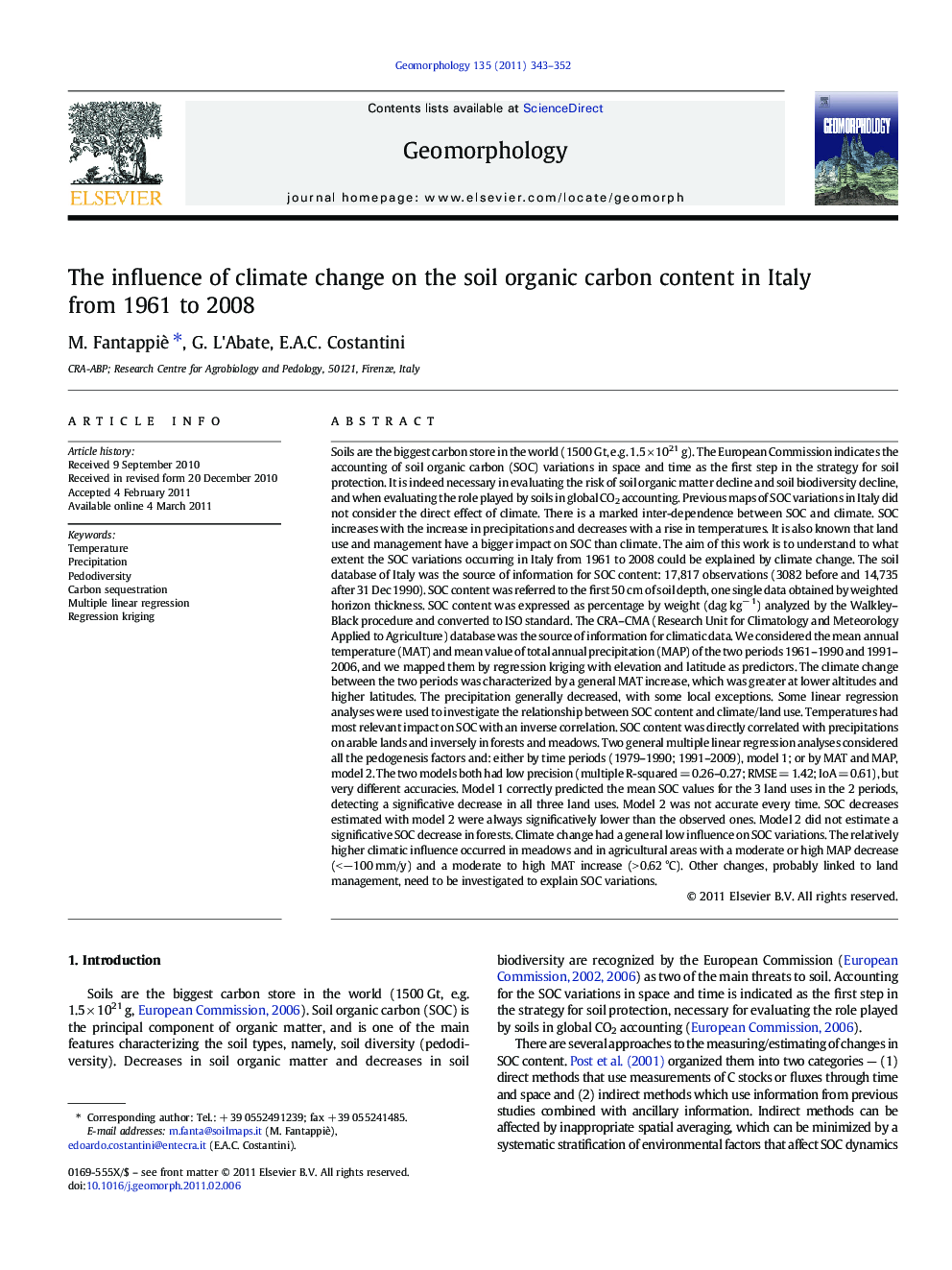| Article ID | Journal | Published Year | Pages | File Type |
|---|---|---|---|---|
| 4685422 | Geomorphology | 2011 | 10 Pages |
Soils are the biggest carbon store in the world (1500 Gt, e.g. 1.5 × 1021 g). The European Commission indicates the accounting of soil organic carbon (SOC) variations in space and time as the first step in the strategy for soil protection. It is indeed necessary in evaluating the risk of soil organic matter decline and soil biodiversity decline, and when evaluating the role played by soils in global CO2 accounting. Previous maps of SOC variations in Italy did not consider the direct effect of climate. There is a marked inter-dependence between SOC and climate. SOC increases with the increase in precipitations and decreases with a rise in temperatures. It is also known that land use and management have a bigger impact on SOC than climate. The aim of this work is to understand to what extent the SOC variations occurring in Italy from 1961 to 2008 could be explained by climate change. The soil database of Italy was the source of information for SOC content: 17,817 observations (3082 before and 14,735 after 31 Dec 1990). SOC content was referred to the first 50 cm of soil depth, one single data obtained by weighted horizon thickness. SOC content was expressed as percentage by weight (dag kg− 1) analyzed by the Walkley–Black procedure and converted to ISO standard. The CRA–CMA (Research Unit for Climatology and Meteorology Applied to Agriculture) database was the source of information for climatic data. We considered the mean annual temperature (MAT) and mean value of total annual precipitation (MAP) of the two periods 1961–1990 and 1991–2006, and we mapped them by regression kriging with elevation and latitude as predictors. The climate change between the two periods was characterized by a general MAT increase, which was greater at lower altitudes and higher latitudes. The precipitation generally decreased, with some local exceptions. Some linear regression analyses were used to investigate the relationship between SOC content and climate/land use. Temperatures had most relevant impact on SOC with an inverse correlation. SOC content was directly correlated with precipitations on arable lands and inversely in forests and meadows. Two general multiple linear regression analyses considered all the pedogenesis factors and: either by time periods (1979–1990; 1991–2009), model 1; or by MAT and MAP, model 2. The two models both had low precision (multiple R-squared = 0.26–0.27; RMSE = 1.42; IoA = 0.61), but very different accuracies. Model 1 correctly predicted the mean SOC values for the 3 land uses in the 2 periods, detecting a significative decrease in all three land uses. Model 2 was not accurate every time. SOC decreases estimated with model 2 were always significatively lower than the observed ones. Model 2 did not estimate a significative SOC decrease in forests. Climate change had a general low influence on SOC variations. The relatively higher climatic influence occurred in meadows and in agricultural areas with a moderate or high MAP decrease (<−100 mm/y) and a moderate to high MAT increase (> 0.62 °C). Other changes, probably linked to land management, need to be investigated to explain SOC variations.
